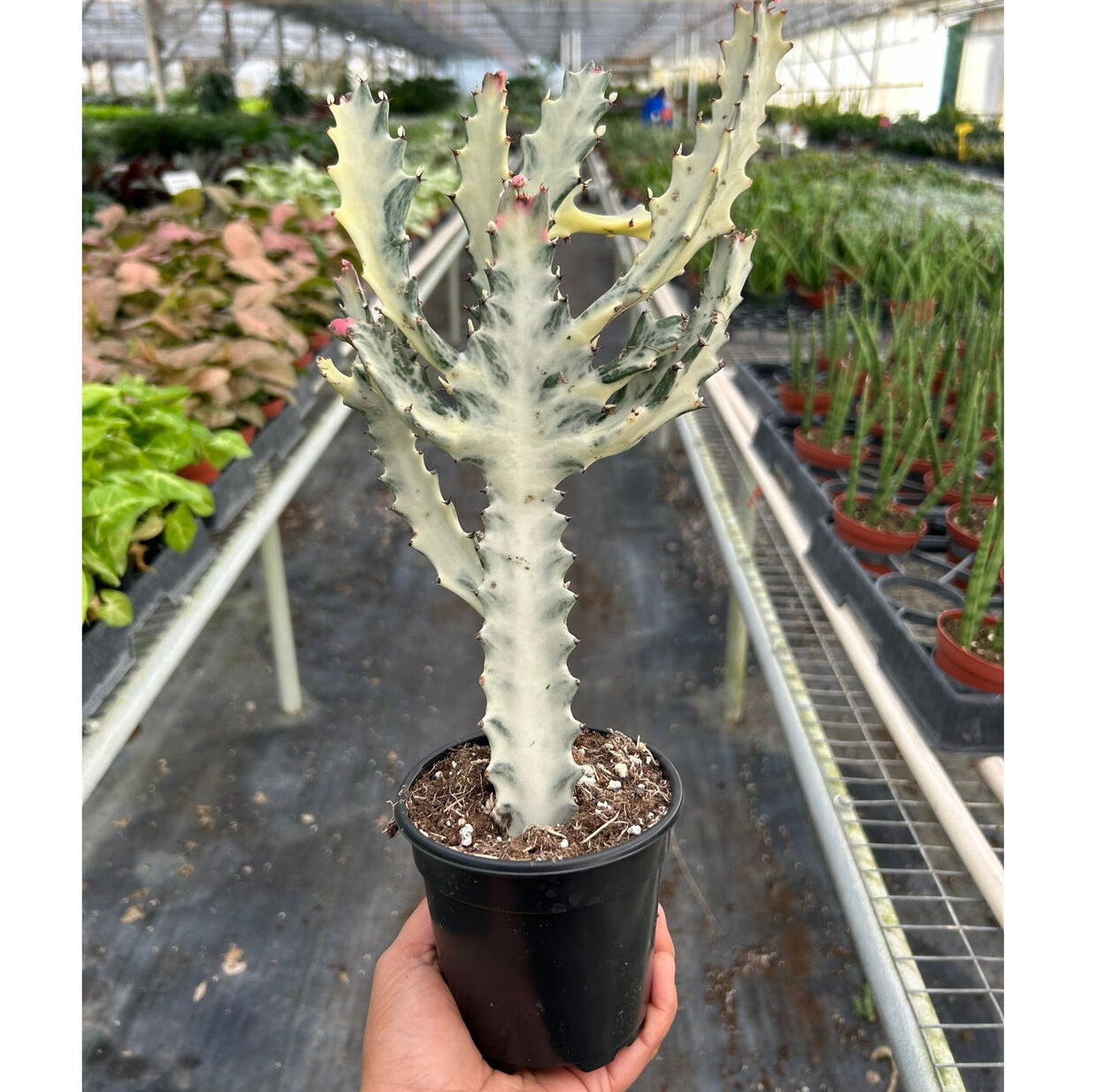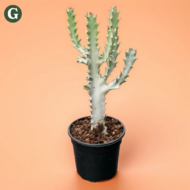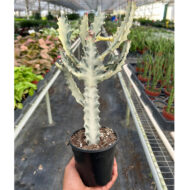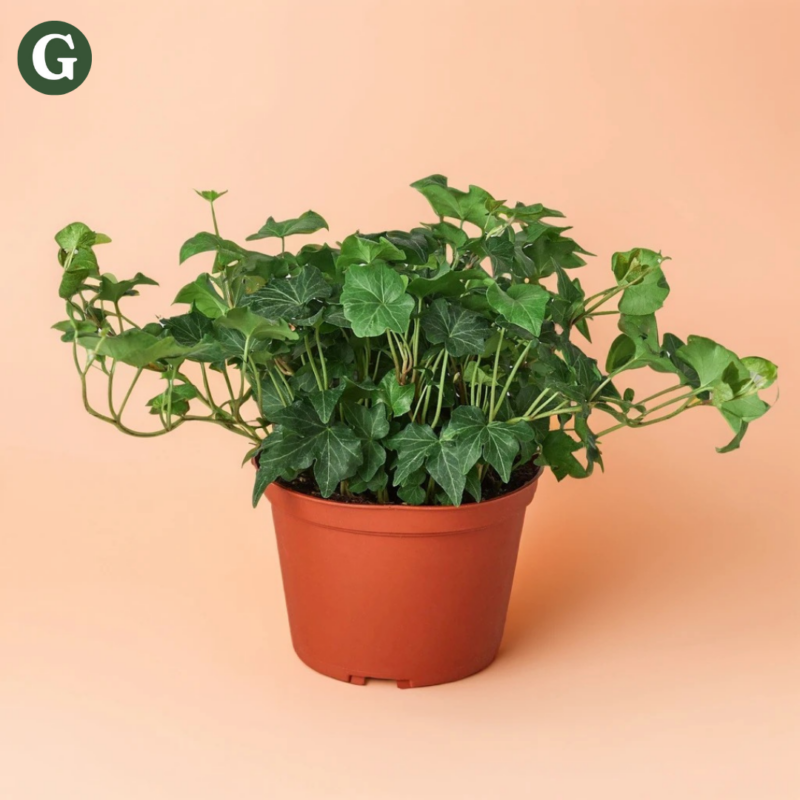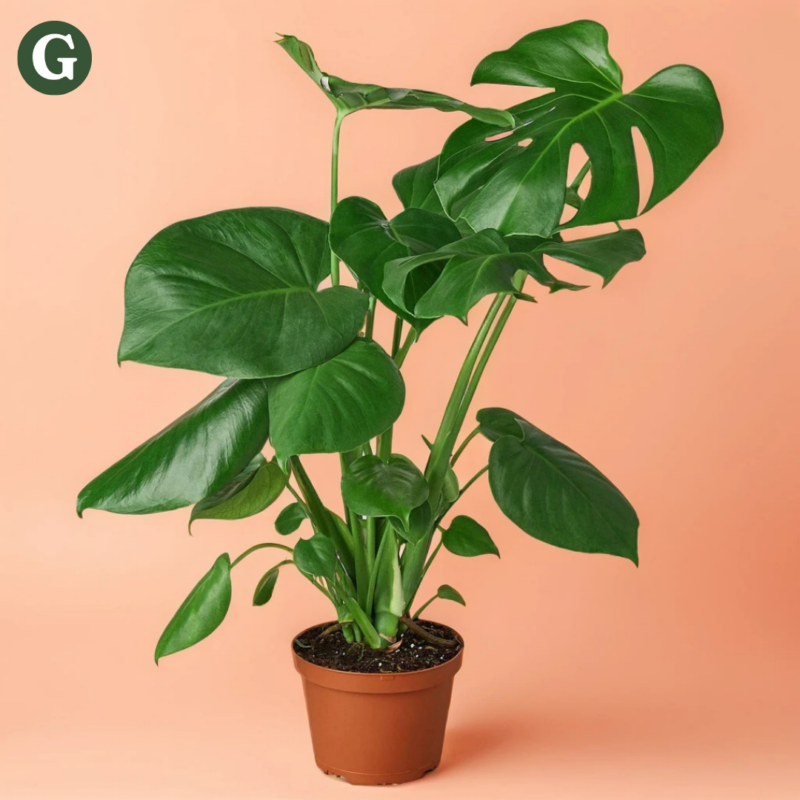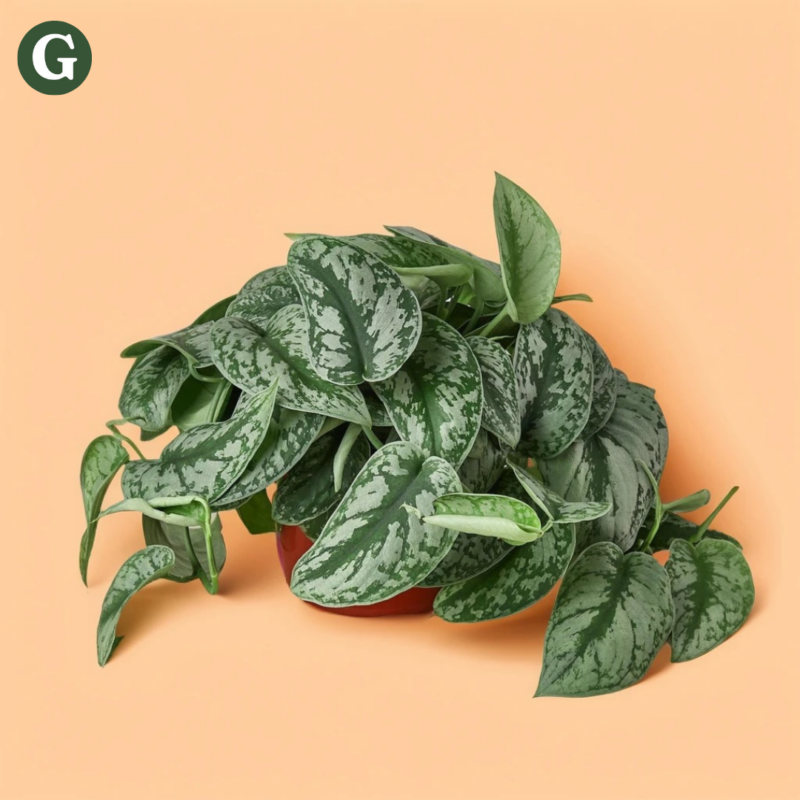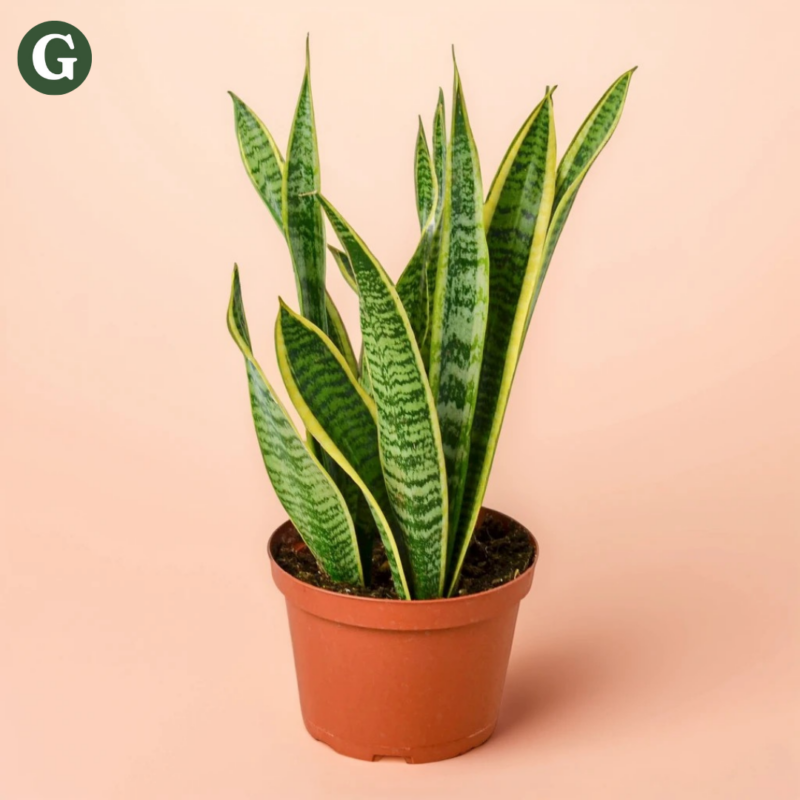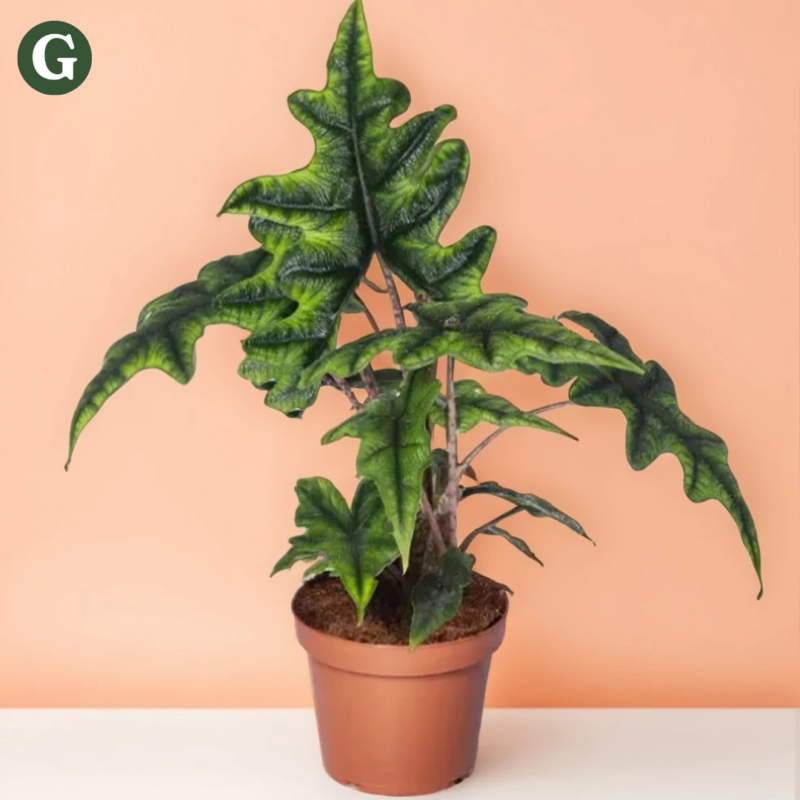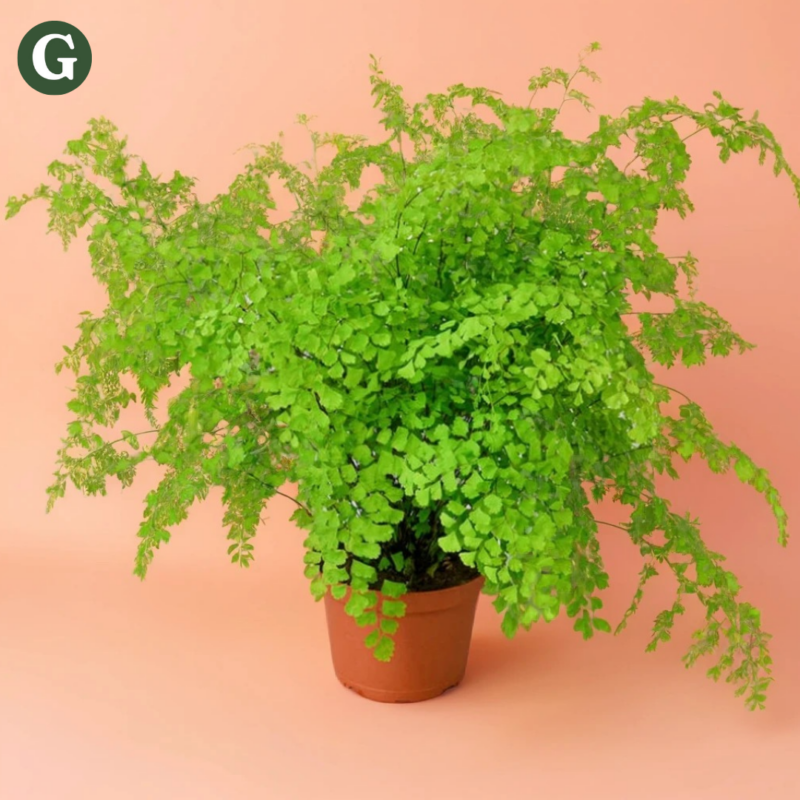Succulent Euphorbia Dragon Bone
Botanical Name: Euphorbia lactea 'Dragon Bone'
Common Name(s): Dragon Bone Cactus, Crested Euphorbia, White Spined Euphorbia
The Euphorbia Dragon Bone is a striking and sculptural succulent that stands out with its unique, tree-like appearance. Native to tropical regions of Asia, this plant is known for its dramatic, contorted stems that resemble the bones of a dragon, which gives it its common name, "Dragon Bone Cactus." The stems of this succulent are thick, white to pale green, and covered in prominent, sharp spines that create a spiny, architectural silhouette. Over time, the plant’s stems become increasingly twisted, forming a fascinating and unusual structure that makes it an eye-catching statement piece in any plant collection.
This Euphorbia variety typically grows upright, reaching heights of 3 to 4 feet (1 to 1.2 meters) but can be pruned to maintain a smaller, more manageable size. The dragon bone-like growth pattern and vibrant, spiny stems give it a bold, artistic appearance, making it a perfect choice for adding a touch of drama to both modern and minimalist home decor.
The Euphorbia Dragon Bone thrives in bright, indirect light but can also tolerate some direct sunlight. However, too much direct sunlight can cause the plant’s delicate stems to scorch, so moderate exposure is recommended. It’s important to allow the soil to dry out completely between waterings, as this plant is highly drought-tolerant and prone to root rot if overwatered. When grown indoors, it is best placed in a well-ventilated area near a bright window. Like other Euphorbias, it prefers well-draining soil and should be potted in a cactus or succulent-specific mix.
This plant is easy to care for and perfect for succulent enthusiasts, both beginners and experts alike. It requires minimal maintenance beyond occasional pruning to maintain its shape and prevent overgrowth. Due to its striking appearance and resilience, the Dragon Bone Cactus makes an excellent addition to indoor plant collections and its a favorite amongst succulent aficionados.
Note: This Euphorbia lactea variety produces a milky, latex-like sap when damaged. This sap can irritate the skin and eyes, so it is important to handle the plant with care, wearing gloves to avoid contact. Keep it out of reach of pets and children to prevent accidental ingestion or irritation from the sap.
Care Insights & Expert Tips
- Pruning when need: Pruning is generally not necessary unless you need to remove dead pads or control the size of the plant.
- Succulent/Cactus Mix: For this succulent, a well-draining succulent soil mix is preferred as this soil mimics a dry desert environment.
- Repot every 2-3 years: Repot every 2-3 years or when the plant becomes too large for its container.
- Handle with Care: This cactus is covered in spines that can cause painful injuries. Use thick gloves when handling them.
- Propagates easily: This cactus can be easily propagated by cutting off stem pads (cladodes) and allowing it to dry and callus for a few days before planting it in well-draining soil.

Visit our plant care library
Find essential tips to keep your plants thriving, vibrant, and healthy.

